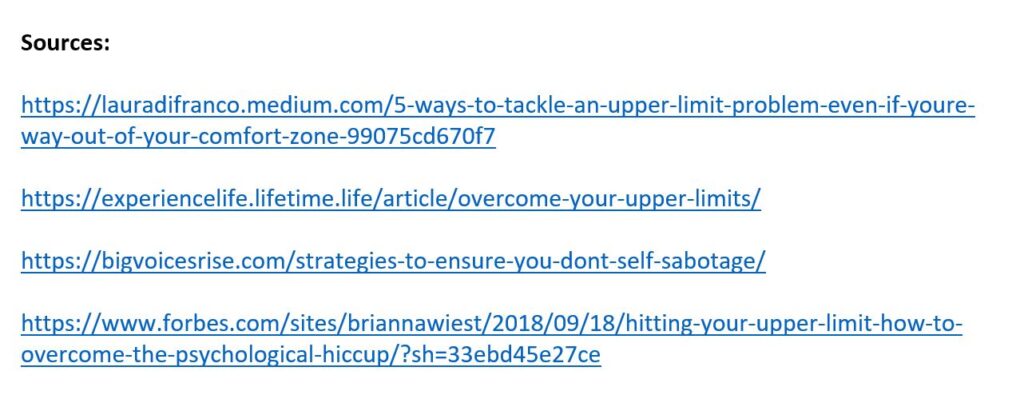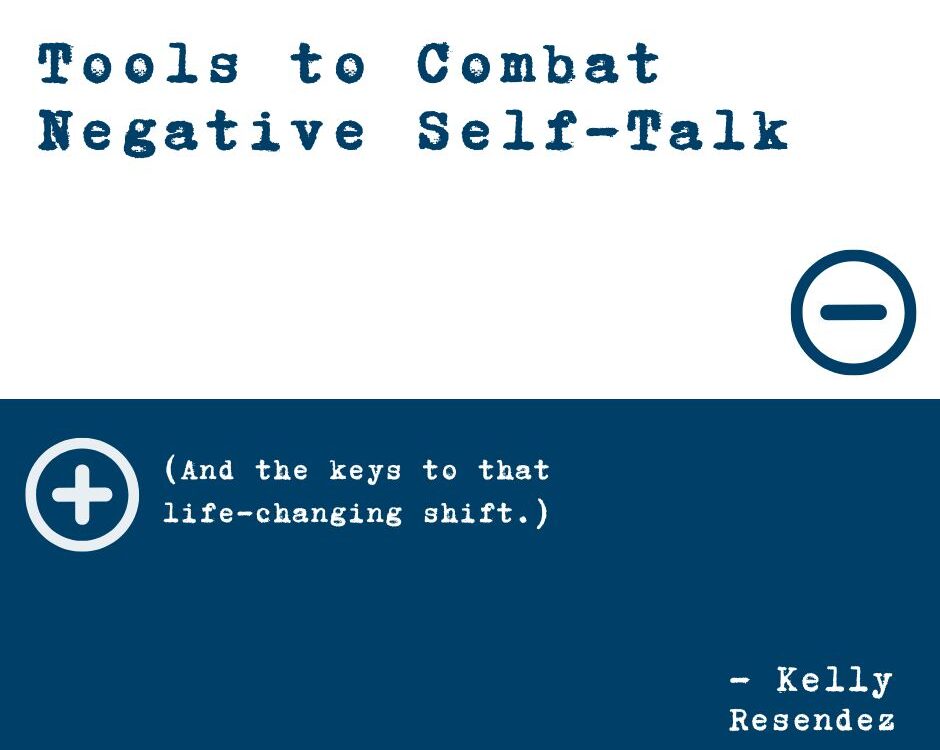
Kelly Resendez appears as a guest on The Mark Haney Show podcast.
April 16, 2022
Workplace wellness programs create happy, healthy employees…but do they improve the bottom line?
June 14, 2022Tactics to help you break through your Upper Limit Problems and live the life you truly deserve.

Why does the average person fall woefully short when it comes to maximizing their potential and living the life they truly deserve?
Is it because of external circumstances or plain ‘old bad luck? Bad choices along the way? Wrong spouse or friends? Can we blame it on upbringing and childhood traumas?
While all of those are valid and serious obstacles along our life’s journey, they don’t slam the door shut on our fully-happy, self-actualized existence.
Instead, self-sabotage holds most people back from their dream life. Yes, we are our own worst enemies in many cases, especially when everything we want is right within reach.
This psychological phenomenon even has a name – Upper Limit Problems, made famous by author Gay Hendricks in his book, The Big Leap.
In my recent blog, I thoroughly examined Upper Limit Problems and introduced their most common (and destructive) manifestation by which we derail our lives just when things are going well: self-sabotage.
Today, we’ll delve into how to overcome our negative belief mechanisms that kick in right when we have the potential to be truly happy, successful, or fulfilled.
With these six simple (but far from easy) six steps below, you’ll be able to smash through self-sabotage forever, allowing you to live the life you truly deserve.
1. Awareness.
Like any behavioral change, the first step is awareness. If we don’t know when, where, and why our self-sabotage manifests, we have little chance of addressing it.
Notice when upper limit problems occur in your life. Observe your thoughts, feelings, anxieties, and beliefs that circulate around those issues. You’ll start noticing things very quickly, like patterns of negative thoughts when something comes up in your life, like relationships, money, or self-worth.
Kelly’s Tip: Observation and self-awareness are great, but it’s vital that you start writing these things down. Take notes in a journal every time you run into these limiting beliefs and the emotions or thoughts that revolve around them. The clarity of putting pen to paper will be invaluable!
2. Understand those triggers – and where they come from.
Many of our beliefs that lead to upper limit problems and self-sabotage are deeply ingrained, going back to our childhood and even past traumas. While you shouldn’t expect to just flip a switch and resolve all of these issues, you can identify where your present-day self-sabotage comes from. Just understanding these origins will allow you to separate from the root of your self-sabotage, de-personalize the causes, and, eventually, move on.
3. Change the narrative = change your life.
This is an incredibly powerful tactic. Many of our psychological processes and how we navigate through life accordingly, are based on the stories we tell ourselves.
While one person may think:
I am a winner.
I will end up happily married.
Money easily flows to me.
Another person may have thoughts playing in a continuous loop like:
I always have bad luck and bad things happen to me.
I’m just waiting for my relationship to fail, and I’m destined to be alone.
I’ve always struggled with money, and I’ll never be successful.
Those negative thought loops turn into self-fulfilling prophecies through a spectrum of decisions, how we perceive and interpret what happens to us, and the inevitable self-sabotage if our narratives are threatened (even with good stuff).
So, if we consciously set a new story about our life, our thought patterns start expanding in positive ways to conform to that new narrative.
4. Stop the negative self-talk.
Based on those stories we tell ourselves, our brains create self-talk. These internal messages are ongoing, with up to 60,000 thoughts a day for the average person. However, about 95% of those thoughts are serially repetitive, on a loop. The problem is that if we have upper limit problems, up to 80% of those thoughts will be negative or limiting!
Can you imagine the dire psychological and even physiological impact of tens of thousands of negative thoughts popping in our heads every day, regardless of external circumstances?!
It’s not easy to change your thoughts and stem the flow of negative self-talk, but every single person can do it with some self-awareness, dedication, and practice. Soon, those tens of thousands of daily thoughts can be positive, working for you – not against you!
5. Make a plan
With anything ambitious or difficult we want to accomplish in our lives, we need to start with a plan. I’ve created a three-part plan that worked fantastic for me in the past when I was trying to smash the self-sabotage habit.
Part 1:
Identify the upper limit problems and barriers that emerge whenever you have a clear path to growth or success. I highly suggest writing them down, such as in a daily journal. Just through this process of clarification, you’ll be empowered to address and deal with them.
Part 2:
Enlist the help of an accountability partner (or partners) by sharing the specifics of your upper limit problems, limiting beliefs, and how you’re self-sabotaging. The psychology of goal setting shows us that having someone hold us accountable vastly increases your success rates of following through and achieving that change.
Part 3:
They say that knowledge is power, and that’s our next stage of reversing the predilection to self-sabotage. Now that you’ve gained clarity on what you’re doing, when, and why – even writing it down and enlisting an accountability partner – it’s time for due diligence. Research every article, blog, video, and book you can, tapping into the universal knowledge of experts in the field. In short order, soon you’ll have a brand-new tool kit of strategies to face your past habits – and change them.
6. Implement your new plan
The final step in our journey to cease self-sabotaging is to craft new behaviors. Ideally, those behaviors will turn into habits, becoming so ingrained that they completely rewire your brain.
Based on what you’ve learned and the plan you drafted, there are many ways to do that. So, this is somewhat of an oversimplification to put it all in one step or stage.
It’s a very personal and varied process, and it all depends on why and how you’re self-sabotaging.
I will tell you that no matter what your plan or mechanism for change, it will be a process. At first, it will all feel foreign, overwhelming, and uncomfortable. It may even stir up more of the deep-seated emotions or traumas at the root of your sabotaging behaviors.
It’s crucial that as you deconstruct and then reshape your internal narrative, you also work on building up your self-esteem. Release intrinsic guilt and anger, forgiving those in your life who caused you trauma.
Like any process, it will take time. Be patient and don’t compare yourself to others or focus on the outcome – just try to be better today than you were yesterday. And stick to your plan.
A final note:
Remain conscious of what you do or when you backtrack. At the same time, suspend judgment about it – setbacks are part of the process, too, and compltely understandable.
Be gentle with yourself and laugh along the way, as you’re about to unlock a bright, wonderful new future where you’re no longer holding yourself back from the life you truly deserve!




